An Atrial Septal Defect is a hole between the two upper chambers of the heart. To close the hole, the doctor will place a special device in the child's heart by catheterization, called Atrial Septal Defect Closure.
ASD closure procedure involves an incision in the heart's right atrium to access the defect, followed by the placement of a patch. It is either the patient's pericardial tissue or a synthetic graft stitched onto the septum's hole to close it.
The Cost of an Atrial Septal Defect Includes:
The Overall Cost of the Procedure also Varies Based on the Patient's Condition and Preferences. Some of these Factors are:
Listing approximate price of Asd Atrial Septal Defect Closure and some related procedures. The prices may change depending upon the centers and condition of the patient.
| Treatment name | Cost range |
|---|---|
| Device Closure- ASD VSD | USD 22500 to USD 27500 |
The cost of Artrial septal defect surgery cost includes pre operative tests such as CBC, LFT, KFT, sodium, potassium tests and viral markers test such as HIV, HCV, HBASG test. Some of the diagnostic tests conducted before the surgery are echocardiogram, chest x ray, electrocardiogram, MRI scan and computed tomography.
The cost of pharmacy, medicines are not included in the package but if you get these from outside then you have to pay for it.
Artrial septal defects closes the hole present between the two chambers of heart which is congenital. In artrial septal defect an incision is made in the chest wall to get direct access to the heart, then patches are used to close the heart. Hospital stay of three to five days is needed for complete recovery.
Popular Cities in Germany for Asd Atrial Septal Defect Closure are:
Listing popular specialists:
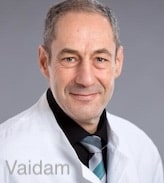
Director, 34 years of experience

Cardiac diagnostics/Coronary vessel interventions Univentricular heart Laser light coronary plaque imaging Implanting pacemakers/defibrillators/ICDs Cardiac ablation for arrhythmias Cardiovascular disease prevention
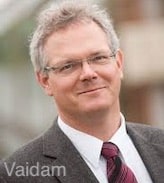
Director, 32 years of experience

Cardiac Catheterization Cardiovascular Medicine Catheter interventional procedures Pulmonary Hypertension Cardiovascular Hypertension Heart Failure Echocardiography
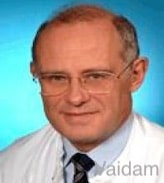
Senior Consultant, 30 years of experience

Image-guided Surgery Endoscopic Cardiac Surgery Minimally Invasive Cardiac Surgery Mechanical Circulatory Assist Minimally-invasive and endoscopic valvular surgery Arterial and minimally-invasive coronary revascularization Bypass surgery Mechanical circulatory support Cardiac insufficiency
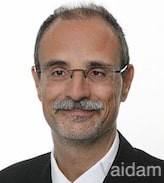
Director, 31 years of experience

Neurological diseases Gastroenterological / Hepatological Diseases Pulmonological diseases Hormonal diseases Infectious diseases Cardiac Catheterization Cardiovascular Medicine Catheter interventional procedures Pulmonary Hypertension Cardiovascular Management of Metabolic diseases in pediatrics Management Mitochondrial diseases in pediatrics Diagnosis and treatment of Diabetes mellitus in childhood and adolescence Hypertension Heart Failure Echocardiography
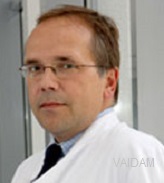
Senior Consultant, 18 years of experience

Prenatal screening, Comprehensive range of interventional therapy options, Diagnosis and treatment of cardiac irregularity
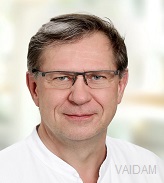
Prof. Dr. Med. Martin Kostelka
Senior Consultant, 32 years of experience

Ventricular septal defects, Sinus venosus defects, Transposition of large vessels, Fallot's tetralogy, Complete and partial AVSD (Atrioventricular Septal Defect)
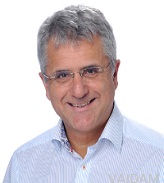
Chief, 20 years of experience

Prenatal diagnostics of congenital heart defects Pediatric Intensive care Heart and heart-lung transplant Invasive, non-invasive, surgical diagnostic and therapeutic interventions Special Counselling
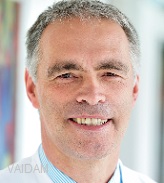
Prof. Dr. Med. Johannes Breuer
HOD, 27 years of experience

3D echocardiography, Fetal echocardiography, Aortic valves, Blood vessels
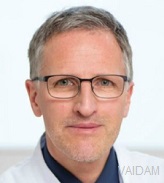
Prof. Dr. Rainer Kozlik Feldmann
Director, 27 years of experience

Catheter intervention, Pulmonary hypertension, Heart transplant, Pediatric intensive care medicine, Neonatology, Pediatric intensive care medicine
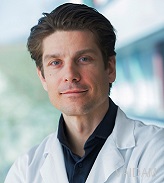
Head of Department, 25 years of experience

Pediatric cardiac surgery, Surgery for congenital cardiac, Thoracic vascular diseases
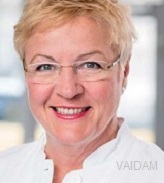
Prof. Dr. med. Brigitte Stiller
Director, 32 years of experience

Atrial Septal Defect (ASD), Patent Ductus Arteriosus (PDS), Ventricular Septal Defect (VSD), Pulmonary Stenosis (PS), Aortic Stenosis (AS), Coarctation of Aorta (COA)
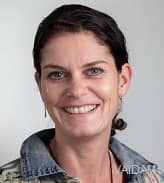
Consultant, 19 years of experience

Aortic coarctation, Aortic valve stenosis, Arrhythmia, Cardiomyopathy, Patent ductus arteriosus (PDA)

Prof. Dr. med. Tsvetomir Loukanov
Head of Department, 22 years of experience

Cardiac surgery using the hybrid procedure, Beating heart surgery, Vascular compression syndromes of the intrathoracic trachea, Valve reconstruction, Univentricular heart, Aortic arch and tracheal surgery
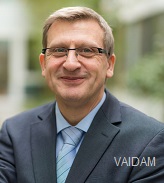
Head of Department, 24 years of experience

Congenital heart defects, Cardiac catheter examinations and interventions

Prof. Dr. med. Robert Cesnjevar
Head of Department, 22 years of experience

Correction of atrial septal defects, Treatment of tetralogy of fallot, Correction of double outlet right ventricle, Ross procedure, Fontan procedure, Correction of the atrioventricular canal defect
Our Services for Asd Atrial Septal Defect Closure in Germany
Transparent - Professional - Without Hassles
ASD closure is the procedure for closing the artial septal defect which is the hole in the heart, this is the abnormal opening in the wall of the heart which closes few weeks or months after birth.
If the hole is small and it is not causing any problem then no treatment is needed but if the ASD is large blood can leak into the wrong chamber of the heart which can make the heart and lung to work harder and it can result in enlarged heart, heart failure, high pressure in lungs, shortness of breath and stroke.
There are various techniques of ASD closure which needs open heart surgery. The hole can be covered with a patch made up of synthetic material or plugged with a closure device or sewn with sutures.
ASD closure is always done by a cardiologist or any heart surgeon who are specialist in this procedure.
This surgery is done under general anaesthesia. An incision is made in your chest down the middle of the chest over breastbone, or on the right side of the chest. A special tube is being used for spreading the ribs then by using a endoscope ASD is located and it is closed with a plug, patch or sutures.
This procedure is used if you have smaller ASD and no other heart condition is see along with it which needs to be corrected. An incision is made in the femoral vein and sometimes also in the femoral artery of your hour joint. Then a thin tube called catheter is inserted which holds the closure device on one end and by using an imaging technology such as X ray and echocardiogram catheter and device is guided through the vein to your heart and closure device is closed in your heart. Catheter is removed at last.
After ASD closure you will be kept under observation till you are completely recovered from anaesthesia. You have to be in hospital for one or more night depending on the type of procedure you have undergone.
ASD closure can reduce the symptoms and complications associated with a hole in your heart which can protect your heart and lungs, helping you live a longer.
Some of the risks of the procedure are arrhythmia, bleeding, damage or puncture of heart tissue, infection of the incision, kidney failure, allergy to materials or mini stroke.
It will take around six months to recover completely from the procedure. You may have to undergo some tests such as ambulatory monitors, echocardiograms, electrocardiograms and exercise stress test.
Rarely, some people need repeat surgery to close an opening left behind after ASD closure or a reopened hole but it is a very rare procedure if the hole is large enough to cause problems.


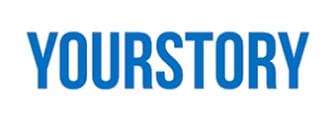



NABH Certified Healthcare Discovery Platform
Vaidam is NABH certified healthcare discovery platform that will connect you to top-notch medical experts, hospitals, wellness options, and trusted travel partners to help identify and make the right healthcare choices.

Researched & Personalized Treatment Plan - Under One Roof
You can search for the best hospitals, read about them, view photographs of the facilities at the hospitals and the places at which the hospitals are located, and check the cost of treatment.

Quality Treatment Within Your Budget
As soon as you post an enquiry, the patient relation team will collect details from you, share them with the doctors and hospitals on Vaidam's panel, and get a personalized treatment plan. We research to get quality treatment within your budget.

Treatment to Travel
Vaidam concierge assists patients, to get medical Visa, the best airline fares and arrangements for your stay. Our concierge also helps you with daily travel, language, and food concerns. Vaidam does everything to be your perfect host. All of Vaidam’s services are free of cost to patients.

International Reach
Vaidam Health has network in 15+ countries, which includes India, Turkey, UAE, Germany, South Korea, Thailand, Malaysia, Spain.
Note: Vaidam Health does not provide medical advice, diagnosis or treatment. The services and information offered on www.vaidam.com are intended solely for informational purposes and cannot replace the professional consultation or treatment by a physician. Vaidam Health discourages copying, cloning of its webpages and its content and it will follow the legal procedures to protect its intellectual property